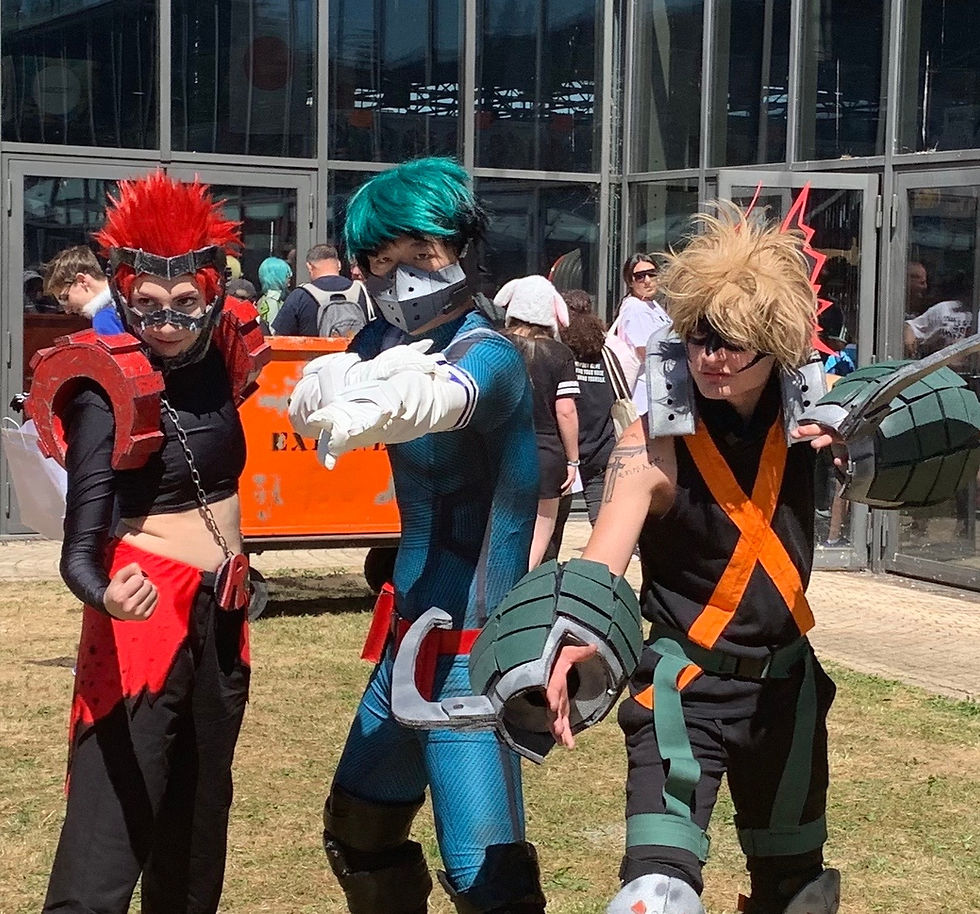Spider-Man Surviving the Test of Time
- Andy

- Jun 30, 2020
- 5 min read
Updated: Aug 9, 2020

Spider-Man, arguably one of the most iconic characters to all ages
With Spider-Man being such a huge franchise it is inevitable that merchandising would be the next step for Marvel, due to the fact that it pushes brand identity whilst also making a profit. In the Hollywood Reporter it stated that Spider-Man’s global retail sales earned Marvel $1.3 billion in 2013, which was during a period between the rebooted films The Amazing Spider-Man (2012) and The Amazing Spider-Man 2 (2014) which were not well received by the public and failed to make the profit Sony predicted. The merchandise sold would range from toys, games, clothes etc.
Like many other franchises that have children a part of their demographic, to increase sales of their merchandise and to push their brand identity is by implementing Spider-Man into other forms of mediums. This can be seen with the many Spider-Man cartoon shows that have been created over the years. Presenting Spider-Man in a similar suit but always slightly different to differentiate themselves from one another, which leads to more merchandising as it gives them more products to sell.

Spider-Man cosplayers showing the characters different depictions throughout the ages
Moreover, due to evolution of technology there have been many incarnations of Spider-Man throughout the years due to his popularity. Spider-Man’s first T.V. show appearance in 1967. This was the first of many of Spider-Man’s animated incarnations and was simply titled Spider-Man (1967). The show was made on a limited budget but still managed to run for 3 seasons having 52 episodes in total. This would have been an audience’s first exposure to the character of Spider-Man, due to the fact that Television had a wider reach than comic books due to the accessibility of T.V. This is due to the fact that after World War II T.V. broadcasting became popular and television sets were now found in almost every home, institutions and businesses. In 1950, 9% of American households had a television and then just 10 years later the percentage jumped radically to 90%. Regardless of the quality of the animation and story, which may have been regarded as poor representation, it is still adored by a generation. So much so that the original theme tune used has persisted throughout multiple incarnations in most mediums and is still heard as the iconic Spider-Man song.
Spider-Man’s first live action appearance was in a Turkish film called 3 Dev Adam (1973) which had ignored copyright law and had used Marvel Characters Spider-Man and Captain America without authorisation. This led to the film not resembling a lot of the original source material and only in name alone. This can be made apparent with the depiction of Spider-man’s costume in terms of colour and the portrayal as a villain. This deviation from the character may be due to the fact that Turkey was unfamiliar with the Spider-Man franchise. The fact this could have been a Turkish audience member’s first exposure to Spider-Man, would be harmful to the image of Spider-Man that writers and artist worked hard to construct.
Spider-Man’s first official live action appearance was not until 1977 called The Amazing Spider-Man (1977) and it became the highest performing CBS production for the entire year. It remains faithful to the the comics, much like the animated T.V. show, in terms of the portraying the origin where Peter Parker is bitten by a radioactive spider which is typically what every incarnation of Spider-Man has in common. Moreover, this attempt was to branch out into a larger audience having a larger budget than its animated counterpart, and due to the fact it was live-action, at this current point in time more spectacles were possible through stunts and practical effects as they had none of the constrictions of the animated show. Through this Spider-Man only became more popular, reaching a global scale. In 1978 Toei, the Japanese Studio, bought the broadcasting rights and created their own Japanese version of the live-action show called Spider-Man (Toei TV series). Toei’s version of Spider-Man was loosely based on the Marvel character but only in costume – the powers and origins had deviated from the actual source material and this version opted for a space science fiction approach. This is due to the cultural influence of Japan, as you see influence of the Super Sentai franchise (commonly known as Power Rangers in the west) within the T.V. show. This incarnation of Spider-Man came with his own giant robot making this embodiment of Spider-Man essentially a different character. This huge shift in character is an inevitability, as taste and preferences will be different when you compare eastern and western cultures due to differing ideologies.

Spider-Man has taken many iterations throughout media from comics, T.V. shows, video games and movies.
Spider-Man and his prominence within the media is as big as ever due to the recent deal between Sony and Marvel, that allows Marvel to use Spider-Man in the cinematic universe. With Spider-Man now on the big screen again and having such a prominent presence, it only increases the popularity of the franchise whilst also introducing new fans of a generation to the character. Though Spider-Man may be seen as overused by some, it is undeniable that he is marketable as he has had a constant presence throughout media – whether that be video games, TV shows, movies or comics. Now with Spider-verse having been released and receiving critical and fan praise; introducing the concept of a multiverse of Spider-Men, the iconography will be bigger than ever. On top of that it may lead people exploring the different iterations of Spider-Man. The concept of having multiple versions of Spider-Man all at once was a new concept for the films but something that has been done in comics multiple times.
Marvel began to release the Ultimate line of comics, a line of comics that would allow Marvel to present their characters in more of a realistic style and was designed to be more grounded. The fact that this line of was in a separate ‘universe’ to the main line stories of Marvel, they were able to rewrite stories how they saw fit and modernise any outdated stories whilst also creating new ones with the realistic tone. The first comic of the imprint was Ultimate Spider-Man (2000) due to the fact that Spider-Man was such a well established character to consumers. Marvel would use Spider-Man’s image and would therefore be able to attract established fans of the franchise and new ones to this new line of comic books.
However, though the comic book was successful Marvel feared that they were simply retelling stories everyone has heard many times due to the influence of films and T.V. shows. Furthermore, due to Marvel wanting to be more diverse in their line of superheroes, due to the change in societal perspective, they decided to kill off Peter Parker in the Ultimate line of comics in 2009 and have him be replaced by a half-Black/Half-Hispanic youth called Miles Morales. He was created by Brian Michael Bendis who wanted to be more diversity in comics and cements that a key reason for Miles’ creation was to push diversity. Initially the introduction of an ethnic minority replacing such a well known and established character faced backlash by fans.
However, this new Spider-Man proved to be popular overtime, due to the fact it was a fresh take on the character of Spider-Man and an audience had no previous experience with Miles Morales and were intrigued on how this character would deal with the responsibility of Spider-Man. Miles Morales has become so popular in the comics that he has been placed in Spider-Man animated T.V. shows, was the lead in the successful animated Spider-Man: Into the Spider-verse (2018) and now has his own game coming out for Playstation’s next-gen console.
While many fictional characters come and go, Spider-Man persists. With having so many incarnations and interpretations created throughout media, it is clear that the character will always be a clear fan favourite in the pantheon of superheroes.
Disclaimer – I’m using my cosplay photos to avoid copyright.






Comments